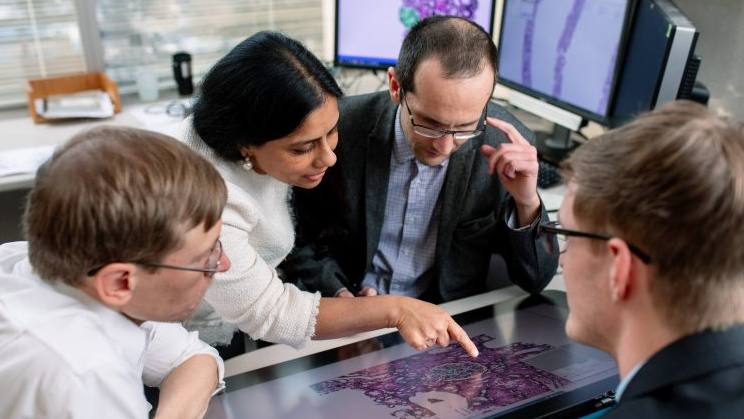-
Featured News
Science Saturday: Teaching a computer to read a kidney biopsy

Artificial intelligence may never replace human insight, expertise and judgment. Then again, no one's complaining about how it can help, especially when it comes to analyzing kidney biopsies, a laborious process that's an intricate mix of art and science. Accurate and thoughtful interpretation of biopsies is of life-changing importance for patients.
"The kidney is a pretty complicated structure, and rating the biopsy, taking that data and using it to assess what's already happened and what will happen is complicated," says Mark Stegall, M.D., a Mayo Clinic transplant surgeon. "When a pathologist reads a biopsy, he or she is looking mostly for an overall diagnosis and not detailed quantification of changes in every single part of the biopsy. However, there's a lot of data that is lost that could be helpful in predicting outcomes if we had a way of measuring it."
That's where a deep neural network can help.
The development of deep or convolutional neural networks — a type of machine learning, otherwise known as artificial intelligence (AI) — has made it possible for researchers to conduct more advanced analyses of medical images. Neural networks need human training, however. They need to know what to look for and analyze, and they take vast amounts of computing capacity and storage space.
Read the rest of the article on Advancing the Science.
________________________________________________________
Other Mayo Clinic medical research websites:
- Research at Mayo Clinic
- Discovery’s Edge
- Advancing the Science
- Forefront
- Mayo Clinic Center for Individualized Medicine
- Center for Regenerative Medicine
- Center for the Science of Health Care Delivery
Related Articles







